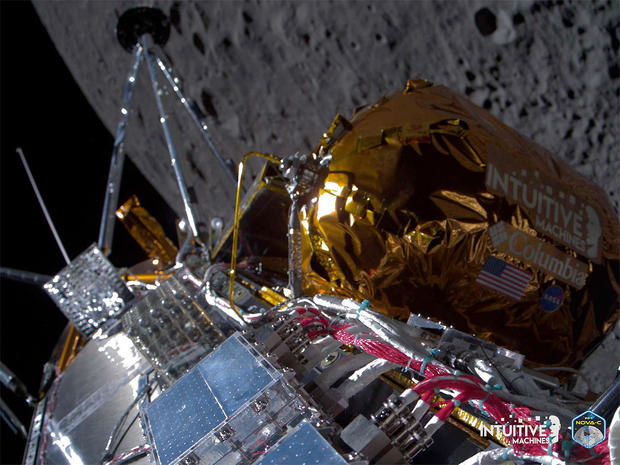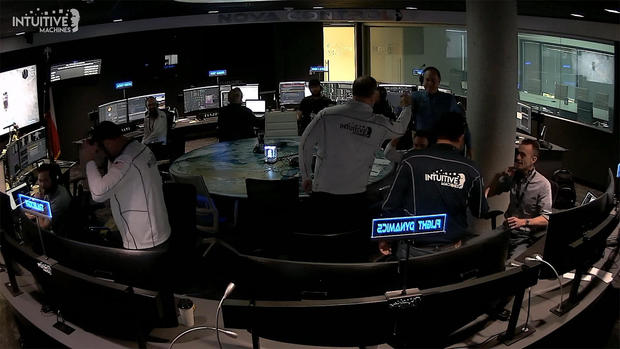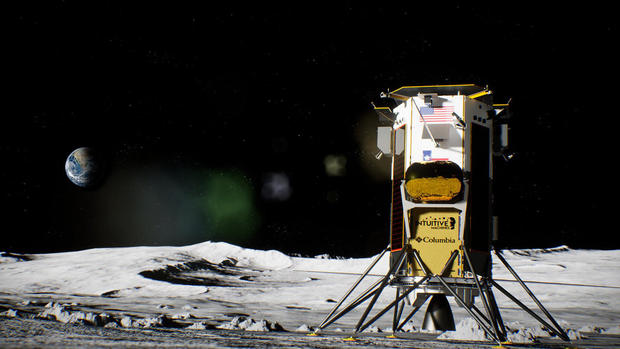
Commercial moon lander brakes into orbit, setting stage for historic landing attempt Thursday
The Odysseus lunar lander fired its main engine for six minutes and 48 seconds Wednesday, putting the spacecraft into a 57-mile-high orbit around the moon and setting the stage for a landing try Thursday, the first for a U.S. spacecraft in more than 50 years.
“Odysseus is now closer to the moon than the end-to-end distance driving across Space City, Houston,” spacecraft builder Intuitive Machines said on its web page. “Over the next day, while the lander remains in lunar orbit, flight controllers will analyze the complete flight data and transmit imagery of the moon.
“Odysseus continues to be in excellent health,” the company added.
Intuitive Machines
If all goes well, Odysseus will begin its descent to the surface Thursday afternoon, touching down near a crater known as Malapert A, 186 miles from the moon’s south pole, at 5:30 p.m. EST.
launch atop a SpaceX Falcon 9 rocket. The 21-second “commissioning burn” verified the engine, the first methane-oxygen propulsion system used in deep space, worked as designed.
Intuitive Machines
Two trajectory correction maneuvers then were carried out to fine tune Odysseus’ path to the moon, putting the spacecraft on such a precise course that a third planned adjustment was not needed. That set the stage for Wednesday’s lunar orbit insertion, or LOI, burn on the far side of the moon.
The make-or-break maneuver slowed the spacecraft, nicknamed “Odie,” by 1,789 mph to put the lander in the planned circular orbit.
Flight controllers at Intuitive Machines’s Nova Control Center in Houston plan to work through a series of health checks, data reviews and rehearsals to make sure Odysseus is ready for its historic descent to the surface Thursday in what would be the first for a privately-built non-government spacecraft.
The main engine will once again play a critical role, dropping Odysseus out of orbit and throttling down as required to ensure a gentle touchdown at a vertical velocity of about 2.2 mph.
No realtime photos or video are expected during the descent, but flight controllers should be able to confirm touchdown within about 15 seconds of the actual landing. The first imagery from the moon is expected a half hour later.
Intuitive Machines
The spacecraft is carrying six NASA payloads designed to study the lunar environment and test new technology along with six provided by commercial customers. Those range from miniature moon sculptures by artist Jeff Koons to insulation blankets provided by Columbia Sportswear and a deployable student-built camera system.
Only the United States, Russia, China, India and Japan have successfully soft landed on the surface of the moon. Three privately funded moon landers were launched between 2019 and this past January, one from an Israeli nonprofit, one from a Japanese company and most recently, Pittsburg-based Astrobotic’s Peregrine. All three failed.
Peregrine and Odysseus were both funded in part by NASA’s Commercial Lunar Payload Services program, or CLPS (pronounced CLIPS), designed to encourage private industry to develop transportation capabilities that NASA can then use to transport payloads to the moon.
The agency’s goal is to help kickstart development of new technologies and to collect data that will be needed by Artemis astronauts planning to land near the moon’s south pole later this decade.
More
More
Source: cbsnews.com

